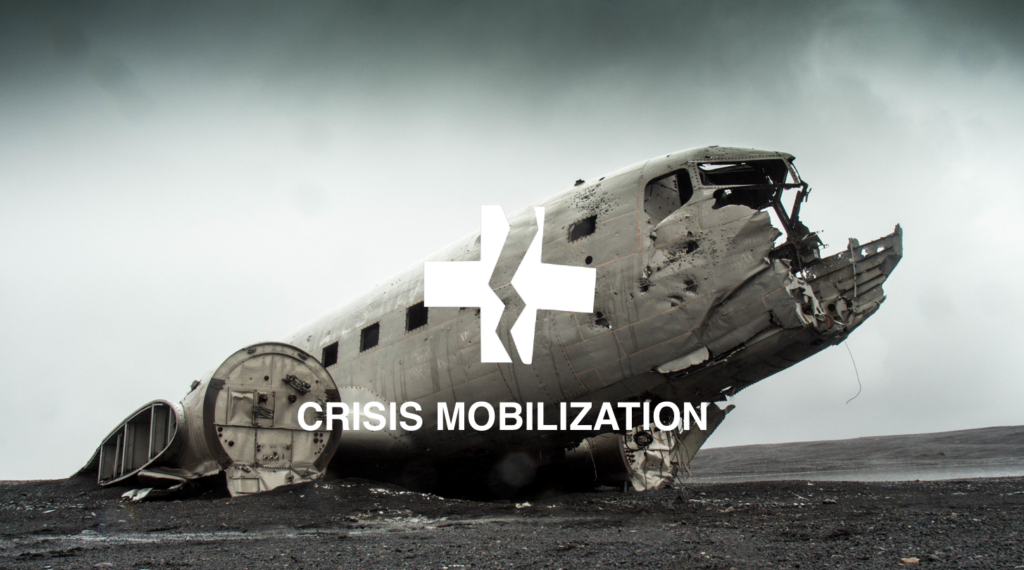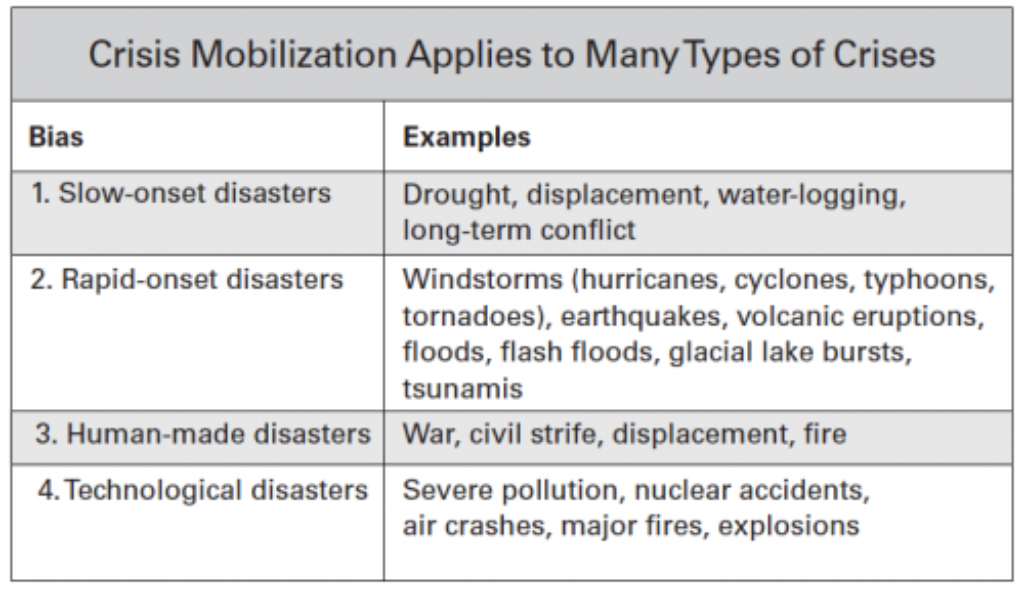
Church Vision that Rescues through Crisis Mobilization
The following post is an excerpt from God Dreams: 12 Vision Templates or Finding and Focusing your Church’s Future.
In part three of the book I walk through the 12 templates starting with a simple definition and providing a personal snapshot from my point of view as a vision consultant. Then, I explore the template biblically, providing historical and contemporary church examples and metaphors for communication. For the complete guide with team assessment questions, I recommend that you buy the book. You can also see all of 12 templates in one visual overview or visit the God Dreams resource site.
Quick Definition
Your church’s vision is to mobilize for crises, or be prepared to mobilize for a future crisis. You might state it as: “We will respond to crisis by rallying our people and resources for immediate relief and/or long-term deployment and development.”
Personal Snapshot
I was riveted to the story of Rich Kannwischer as he talked about leading a congregation through the shocking September 11, 2001, tragedy in New York. He said the finest hour for Central Presbyterian in Summit, New Jersey, was in the wake of the terrorist attack. A church traditionally marked with a myriad of activity and even competing agendas at times became totally galvanized around one ministry: rallying for the families impacted by the devastating attack. With many church members working in the World Trade Center’s twin towers that day, the church become laser focused first on accounting for missing family members, then on crisis care, and then on long-term recovery.
Some churches are best in crisis. And this template accounts for this not-so-common possibility as a long-range area of contribution for a church.
Bible Reflections
The book of Acts is full of ways God’s people mobilized for crisis. Sometimes it was the entire church community banding together. For instance, when a famine arose in Jerusalem, the church in Antioch responded as soon as they heard about it: “The disciples determined, every one according to his ability, to send relief to the brothers and sisters living in Judea” (Acts 11:29). Other times it was individual responses, such as Peter saying to a lame man, “I have no silver and gold, but what I do have I give to you. In the name of Jesus Christ of Nazareth, rise up and walk!” (Acts 3:6).
In fact, God’s people from Old Testament to New Testament are marked by mobilized compassion, just as God is: “For the Lord has comforted his people and will have compassion on his afflicted” (Isa. 49:13; see also 2 Cor. 1:3–4). With the psalmist we can say, “I will rejoice and be glad in your steadfast love, because you have seen my affliction; you have known the distress of my soul” (Ps. 31:7).
The recent run of Hollywood-produced Bible movies (some of which have tried to stay faithful to the original text and others have been more creative) remind us that life was full of drama, giving constant opportunity for God’s people to rally behind one another in crises. Noah, for example, is a strong example of a crisis preparation. So are Moses and Joseph.
Starting Point Metaphors
The image above shows that the cross symbol has cracked or broken, implying a need for help that the church could be mobilized to address. Imagine an earthquake, a building cut open by a tornado, the broken glass of a downtown riot, or a family photograph ripped in half.
Still other images that convey this idea are the Red Cross, an ambulance, an EMT team, a rescue ladder dropping down from a military helicopter, a “jaws of life” machine cutting a trapped person from a smashed car, or a bright orange life-flight helicopter.
Historic Examples
In May 1861, at the dawn of the Civil War, President Abraham Lincoln issued by executive order a call for three-year volunteers to increase the size of the regular army and navy. Plymouth Church in Brooklyn rose to the occasion and defined its vision in light of the wartime crisis for years. The members immediately raised money first for the 13th Regiment to buy clothing, blankets, pistols, holsters, and other equipment. Later the church would adopt two other regiments. The soldiers and their families were supported by special sermons and events. Church facilities were used to store weapons, and the church parlor was turned into a workshop training women and girls how to sew, knit, and pack for soldiers and their wives. The entire community rallied around the special needs of the crisis (Frank Decker, Brooklyn's Plymouth Church in the Civil War Era, 98-99).
Contemporary Examples
When Hurricane Katrina devastated New Orleans and the surrounding region in 2005, becoming the costliest natural disaster in US history, the greatest army of workers to provide relief efforts came from church teams. Not only did churches from across the country send teams to help with rebuilding efforts, but existing church facilities in the affected area became staging grounds and support bases for those teams. Congregations worked with one another at unprecedented levels to rescue and rebuild these hard-hit areas.
Likewise, for international crises from Rwanda’s genocide to Haiti’s massive earthquake, churches have been quick to organize a response of prayer, physical resources, and human expertise.
Sometimes the crisis is real but short-term. When racial tension spilled into violence in Ferguson, Missouri, and Baltimore, Maryland, pastors and their congregations were among the first to offer help and be a voice of peace. When the Sandy Hook Elementary School massacre occurred in Newtown, Connecticut, local clergy, backed by other caregivers in their congregations, sprang into action.
Sometimes the crisis mobilization occurs with denominational help, such as the Southern Baptist state convention in Virginia. It created a “ready church” training program. Over the years Virginia has faced college shootings, floods, tornadoes, hurricanes, earthquakes, massive industrial accidents, and more. Its “ready church” process develops teams to respond within the local church when events go wrong in their communities, mobilizing their members to make a difference. Each training offers necessary instruction for volunteers to respond with other Southern Baptists around the world. This concept sounds sticky, something other denominations could develop as well.
UK-based Tearfund works through churches to help the people in the world who are in the greatest need, regardless of race, religion, gender, or nationality. Founded in 1968, they have experience around the world in crisis mobilization. For example, after the Indian Ocean tsunami in 2004, many people lost their homes and were given temporary accommodation in camps. The Pentecostal Mission in Port Blair, the Andaman Islands, listened to, prayed for, and cared for people living in a camp and also served food to more than five hundred people a day. Emergency financial help and support came from Tearfund.
Tearfund’s book, Disasters and the Local Church, identifies four basic types of disasters. This list, shown below, builds an appreciation for the scope of crisis mobilization opportunities. In addition each kind of crisis provides many different opportunities for the role of a church including immediate response, resource provision, compassion and care, influencing and shaping values, acting as a community peacemaker, facilitating community action, and advocating for marginalized people.

Realizing Your Own Vision
Are you ready to move away from the
>>>>Buy God Dreams >>>>
>>>> Visit the God Dreams Site >>>>




